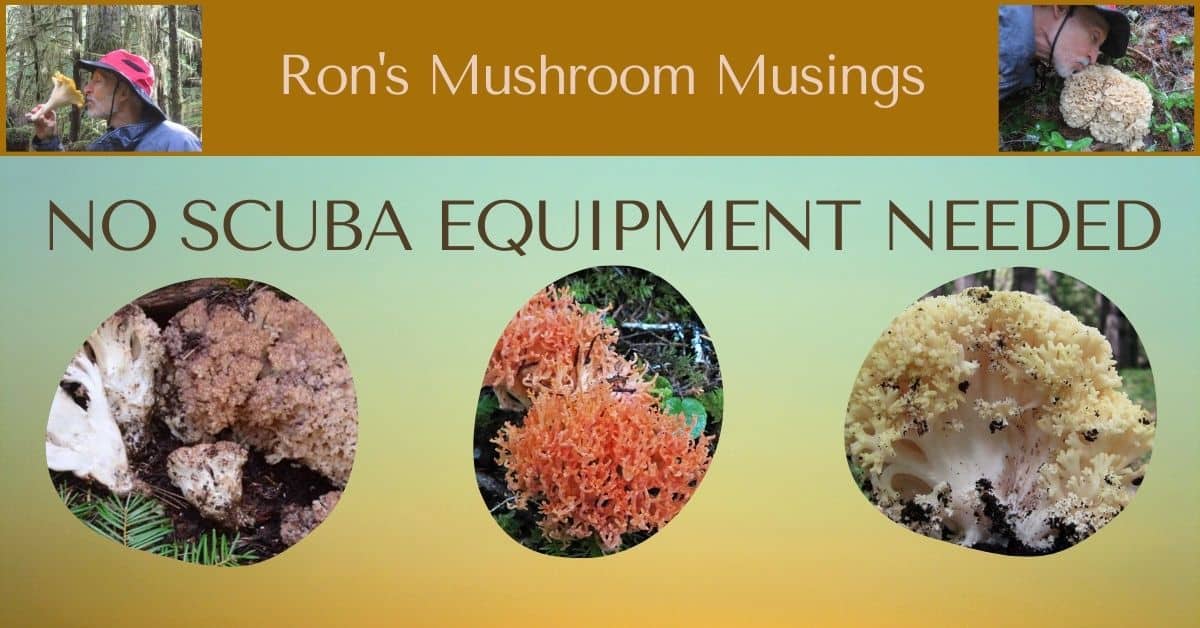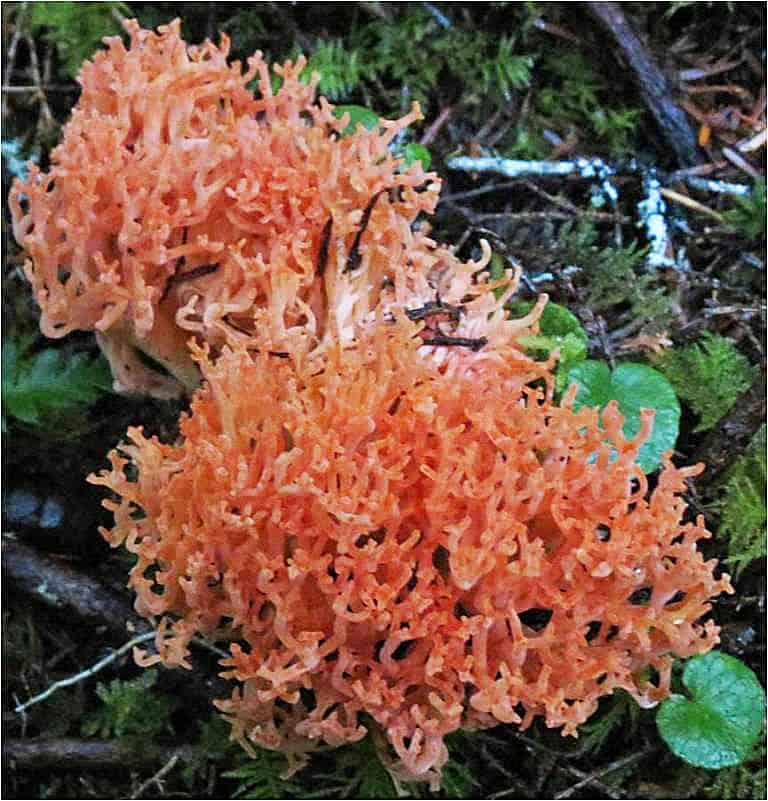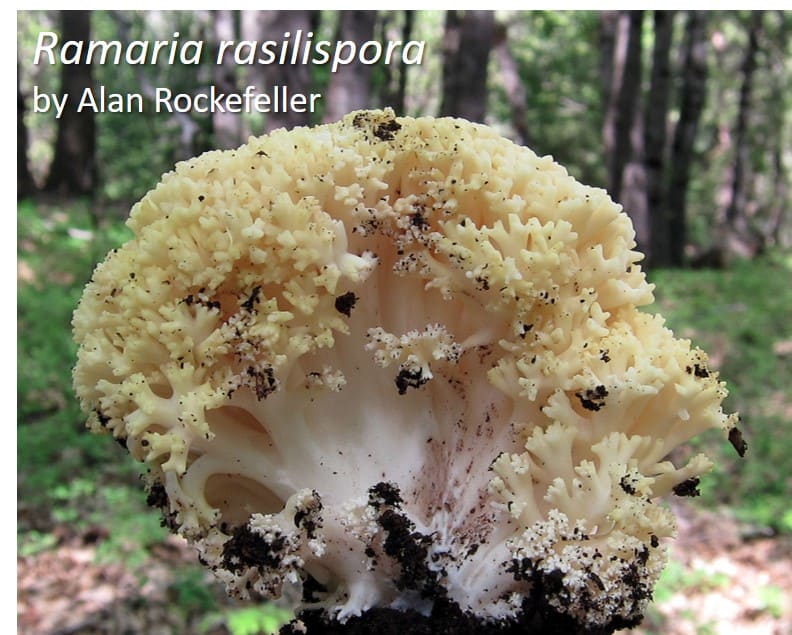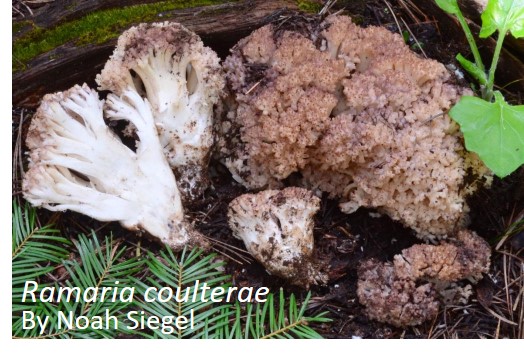No scuba equipment needed


While there are still some amazing undersea coral beds to dive down to and explore, as a land lubber, I’m more interested in those that grow on terra-firma. More specifically, fungal fruiting bodies we commonly refer to as coral mushrooms in the genus Ramaria. It would be confusing to just use the common name of “coral” without specifying a genus as there are several genera that include these lovelies. Sandy and I found the one pictured to the left at the coast this past fall. Since we do not have a microscope, we were not able to key it out to an exact species. Since Ramaria is the largest of the “coral” genera with an estimated 500+ species, we’ll just call it Ramaria sp for now. But not to worry as our fungal scientists that do have microscopes and DNA analytical tools will no doubt soon split this large genera into some 499 subspecies with scientific names too difficult to pronounce.

Ramaria species are very common in the Pacific Northwest and will fruit in the fall/winter as well as in spring. Unfortunately, while some of these mushrooms are edible, most are not very easy to identify as different species can look quite similar to each other. Exact identification is very important as some can give you a good case of gastrointestinal distress and even some edible ones can have a strong laxative effect, like Ramaria rasilispora, commonly called the pale-yellow coral. This species is one of a number of species that primarily or only fruit in the spring. That’s good news as according to a Trial-Key produced by Michael Beug, he states “While none of the spring Ramaria species are known to be poisonous, members of the Ramaria magnipes/ rasilispora complex have been known to cause gastric upset in some sensitive individuals.” Of course, let’s not forget the possible laxative effect they can also have. However, I’m sure we can all use a good body purge now and again.

Well, since I’ve given you some of the bad and the ugly, here’s some good news about a spring Ramariaspecies. Ramaria coulterae is a somewhat blandish looking mushroom but considered a good edible without the gastro or laxative side effects. According to M. Beug, it can be easily confused with Ramariarubripermanens, another spring Ramaria. However, M. Beug wrote “it (R. rubripermanens) has probably been eaten frequently (and unknowingly) without known ill effect. I had about 30 people try it at an OMS foray and all liked the mushroom.” Now, you can’t get much better positive news about a mushroom than that.
Spring is just around the corner and while most of the excitement will be about finding that patch of morels or worm-free boletes, keep your eye out for Oregon’s spring fruiting Ramaria mushrooms. The one’s Sandy and I have found in the past were somewhat buried or appeared more as a hump in an otherwise flat area. According to M. Beug, most of the spring Ramaria species are found above 3,000 feet. We found ours while hiking around the Deschutes National Forest, in the Sisters and Metolius area. There are other spring Ramaria species worthy of investigation, some are listed in the Trial-Key from M. Beug and additionally the book “Ramaria of the Pacific Northwestern United States”. You will find both in the references below. Happy spring mushroom hunting, stay safe, and enjoy Oregon’s amazing forests,
Ron
References
Rarmaria rasilispora – Wikipedia
Ramaria rubripermanens – Wikipedia
Ramaria coulterae – the global fungi redlist
Pacific Northwest Spring Ramaria Species: Subgenera Laeticolora and Ramaria Trial Key by Michael Beug March 2009 – McIIvainea: Journal of American Amateur MycologyPDF of “Ramaria of the Pacific Northwestern United States” By Exeter, Ronald L., Cazares, Efren. Norvell, Lorelei L. (Lorelei Lehwalder)





